- Joined
- Oct 9, 2007
- Messages
- 47,670 (7.43/day)
- Location
- Dublin, Ireland
| System Name | RBMK-1000 |
|---|---|
| Processor | AMD Ryzen 7 5700G |
| Motherboard | Gigabyte B550 AORUS Elite V2 |
| Cooling | DeepCool Gammax L240 V2 |
| Memory | 2x 16GB DDR4-3200 |
| Video Card(s) | Galax RTX 4070 Ti EX |
| Storage | Samsung 990 1TB |
| Display(s) | BenQ 1440p 60 Hz 27-inch |
| Case | Corsair Carbide 100R |
| Audio Device(s) | ASUS SupremeFX S1220A |
| Power Supply | Cooler Master MWE Gold 650W |
| Mouse | ASUS ROG Strix Impact |
| Keyboard | Gamdias Hermes E2 |
| Software | Windows 11 Pro |
ASRock today launched its Arc "Alchemist" A770 and A750 custom-design graphics cards. These include the A770 Phantom Gaming OC, and the A750 Challenger OC. The A770 maxes out the 6 nm ACM-G10 silicon, featuring all 32 Xe Cores (4,096 unified shaders); besides 16 Gbps GDDR6 memory; whereas the A750 gets 28 Xe Cores (3,584 unified shaders), and 16 Gbps GDDR6 memory. Both of ASRock's cards come with 8 GB of memory across a 256-bit wide memory bus, there's no 16 GB version of the A770 Phantom Gaming.
The ASRock A770 Phantom Gaming features a premium, RGB-illuminated cooling solution that's also found in the company's Radeon RX 6000-series Phantom Gaming graphics cards. This card also offers a factory-overclock of 2.20 GHz compared to 2.10 GHz reference. The cooler features a dual fin-stack heatsink with five 6 mm-thick nickel-plated copper heat-pipes that make indirect contact with the GPU over a copper base-plate. The dual ball-bearings fans come with idle fan-stop. There's a switch to manually turn off RGB lighting.
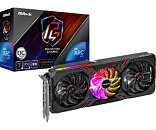
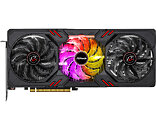
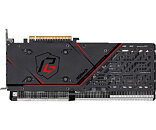
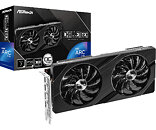
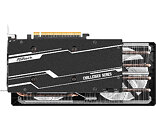
The ASRock A750 Challenger OC features a more straightforward design, with a simple aluminium fin-stack heatsink that's ventilated by two fans instead of three on the A770 Phantom Gaming. You get a handy factory-overclock of 2.20 GHz vs. 2.05 GHz reference. The cooler features four copper heat-pipes that make direct contact with the GPU. Both cards feature the same set of power connectors—two 8-pin PCIe power; and feature a PCI-Express 4.0 x16 host interface.
Both the A750 Challenger OC and the A770 Phantom Gaming OC offer at least one HDMI 2.1 port, which means they're using a protocol-converter chip to turn one of the DisplayPort 2.0 interfaces into an HDMI 2.1. The A750 Challenger OC interestingly offers two HDMI ports, one of which is the native HDMI 2.0b port from the GPU, and the other an HDMI 2.1 through the PCON. The DisplayPorts on both cards meet DisplayPort 2.0 specs.
The A770 Phantom Gaming is priced at USD $329, while the A750 Challenger OC goes for $289, both of which are at Intel's MSRP.
View at TechPowerUp Main Site
The ASRock A770 Phantom Gaming features a premium, RGB-illuminated cooling solution that's also found in the company's Radeon RX 6000-series Phantom Gaming graphics cards. This card also offers a factory-overclock of 2.20 GHz compared to 2.10 GHz reference. The cooler features a dual fin-stack heatsink with five 6 mm-thick nickel-plated copper heat-pipes that make indirect contact with the GPU over a copper base-plate. The dual ball-bearings fans come with idle fan-stop. There's a switch to manually turn off RGB lighting.





The ASRock A750 Challenger OC features a more straightforward design, with a simple aluminium fin-stack heatsink that's ventilated by two fans instead of three on the A770 Phantom Gaming. You get a handy factory-overclock of 2.20 GHz vs. 2.05 GHz reference. The cooler features four copper heat-pipes that make direct contact with the GPU. Both cards feature the same set of power connectors—two 8-pin PCIe power; and feature a PCI-Express 4.0 x16 host interface.
Both the A750 Challenger OC and the A770 Phantom Gaming OC offer at least one HDMI 2.1 port, which means they're using a protocol-converter chip to turn one of the DisplayPort 2.0 interfaces into an HDMI 2.1. The A750 Challenger OC interestingly offers two HDMI ports, one of which is the native HDMI 2.0b port from the GPU, and the other an HDMI 2.1 through the PCON. The DisplayPorts on both cards meet DisplayPort 2.0 specs.
The A770 Phantom Gaming is priced at USD $329, while the A750 Challenger OC goes for $289, both of which are at Intel's MSRP.
View at TechPowerUp Main Site






